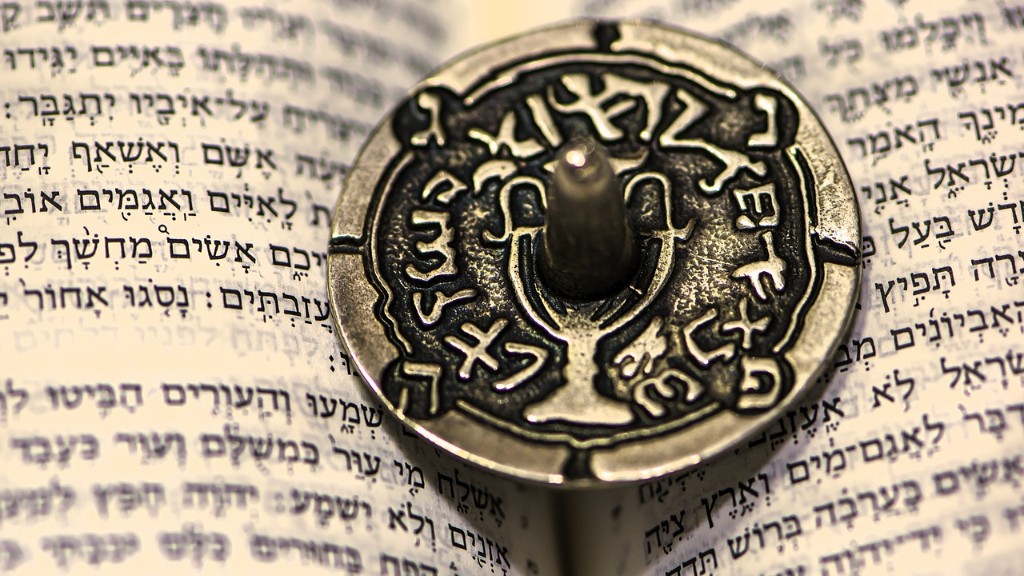Atman (आत्मा), or the innermost self according to Hinduism, is a philosophical concept that forms an important part of the ancient Indian religion. In Hinduism, the Atman is seen as an eternal presence, a spark of individual consciousness, located deep within the human spirit. Atman is considered to be the universal soul or spirit, an essential core of our being, which is indestructible, immortal, and constantly evolving. This essential self is believed to be the divine spark which makes each person unique and guides their spiritual journey.
The concept of Atman is closely linked with the beliefs of reincarnation and karma. It is believed that when a person dies, their Atman leaves their physical body and begins a new journey. The Atman is what is reborn in the next life, and it carries with it the karma from the past life. Thus, the actions taken in one life will shape the Atman’s experience in the next life.
The Atman is also seen as an integral part of Brahman, the absolute divine power in Hinduism. Brahman is seen as the ultimate source of all that exists, including the Atman. It is believed that each individual Atman is inextricably connected to Brahman. In this way, the Atman can be seen as part of the whole, while still being part of a distinct, individual being.
Hinduism emphasizes the search for the realization of the Atman, often referred to as the goal of yoga. Through meditation and other spiritual practices, the individual is said to be able to experience the Atman directly and become one with the absolute divine power. This union of the individual and the divine is known as moksha, a state of liberation and enlightenment.
The belief in the Atman is central to Hinduism, and this is reflected in its literature, art, and ritual practices. In the Upanishads, one of the oldest and most influential Hindu scriptures, the concept of Atman is explored in detail. Similarly, the Bhagavad Gita, which is a key text in the Hindu faith, emphasizes the importance of realizing the Atman for achieving liberation.
Different Perspectives on the Atman
The concept of Atman has been the subject of much debate over the centuries. Different religions, sects, and philosophers have all had their own interpretations of the Atman, and these interpretations have shaped many aspects of Hinduism today.
For some, the Atman is a part of the individual that is separate from the physical body. According to this view, the Atman is an eternal, divine presence that is more akin to a spirit than an actual physical entity.
Others see the Atman as being inseparable from the body. This view suggests that the Atman is the innermost part of an individual, but not distinct from the physical being. According to this interpretation, the Atman and the physical body are one and the same.
Many accounts also speak of the Atman as being both inside and outside of the individual. In this view, the Atman is both a part of the individual and a separate force, intertwined and connected to the higher power of Brahman.
The Practice of Yoga and The Atman
The practice of yoga is thought to be a way of connecting with the Atman. Through yoga, individuals are believed to be able to open themselves up to the realization of the Atman in order to gain understanding and enlightenment. In this way, the practice of yoga and the concept of the Atman are closely intertwined.
The spirituality of yoga is based in releasing the individual from their worldly attachments and connecting with the eternal presence of the Atman. Through the various postures, breathing exercises, and meditation, the yogi is said to be able to tap into the power of the Atman, eventually leading to liberation and enlightenment.
The practice of yoga also has a strong physical component. Many yoga postures and breathing exercises are designed to improve physical strength and flexibility, and this physical practice can also influence the spiritual side of yoga. By strengthening the physical body, a person is said to be more easily able to connect with their spiritual self.
The Importance of The Atman
The concept of Atman is essential to Hinduism. It is the essential part of an individual, the spark of life and consciousness, that connects people to the divine power of Brahman. This belief in the Atman is thought to be the key to liberation and enlightenment, and it is the basis for many of the spiritual practices in Hinduism.
Through the practice of yoga and other spiritual practices, individuals are believed to be able to experience the Atman within themselves and gain understanding of the interconnectedness of all things. This understanding of the Atman is thought to lead to peace and spiritual fulfillment.
The Symbolism of The Atman
The concept of the Atman overlaps with many other spiritual beliefs and symbols in Hinduism. One of the most well-known symbols associated with the Atman is the Om, or Aum. This symbol is believed to represent the union of the individual and the divine, and it is often used during meditation and prayer to symbolize the realization of the Atman within oneself.
In Hinduism, the lotus flower is often seen as a symbol of the Atman. It is thought to represent the growth of the individual from a state of ignorance to a state of enlightenment. By connecting with the Atman, individuals are believed to be able to achieve a state of liberation and spiritual fulfillment.
Finally, the symbol of the swan is often linked with the Atman. This symbol is thought to represent wisdom, knowledge, and spiritual attainment, which are all seen as expressions of the Atman. By achieving enlightenment, individuals are said to be able to soar high, like the swan.
The Journey To The Realization of The Atman
The realization of the Atman is seen as the ultimate goal of spiritual seekers in Hinduism. Through meditation, yoga, prayer, and other spiritual practices, individuals are said to be able to move closer to the realization of the Atman. This journey is often seen as a process of purification, where individuals can let go of their physical attachments and discover the divine spark of the Atman within themselves.
As individuals progress on this journey, they are believed to become more aware of the interconnectedness of all things and the existence of Brahman, or the absolute divine power. This realization of the connection between their individual self and the divine Spirit is thought to lead to liberation and enlightenment.
The teaching of the Atman is an integral part of Hinduism, and it has been practiced and studied for centuries. By understanding and embracing the concept of Atman, individuals are believed to be able to move closer to the ultimate goal of liberation and spiritual enlightenment.

